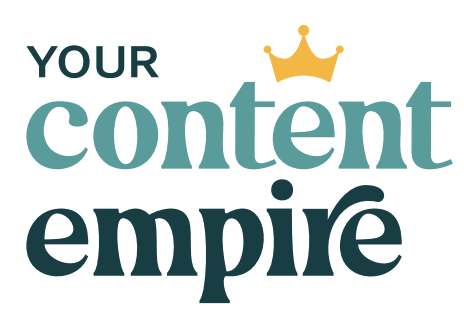I’ve been obsessed with planners for as long as I can remember. From the time I hit middle school and got my first school-sponsored planner, I carried mine with me religiously and filled it out diligently to manage due dates and extracurriculars. Not much has changed, except the planners are definitely prettier now. What has changed though is that I don’t rely on traditional planners to PLAN. I actually create my own DIY planner kits because I can tailor them to the specific planning I need to do and what works for me.
Programs like Canva and Keynote make designing your own planner so accessible, anyone can do it!
To top it off, tools like the iPad and Apple Pencil make using a digital planner more practical. I mean, who really ever remembers to refill their toner anyways?
While pretty day planners are, well, pretty, they aren’t set up to help me to achieve my goals because they’re not structured in that way. Even if they did include goal setting, it wouldn’t be in the way I like to plan, which is why I LOVE creating my own planners.
Don’t get me wrong, I absolutely do buy pretty planners, but to me, they’re just glorified dated notebooks, used to manage my quarterly and monthly plans, not for the ACTUAL planning process itself.
Today I’m going to walk you through my DIY Planner Process.
Why I Plan on a Quarterly Basis
My fandom of quarterly planning dates back to signing up for Todd Herman’s 90 Day Year, and then later reading the book 12 Week Year by Brian P. Moran and Michael Lennington.
Diving into this, it made SO MUCH SENSE to plan things on a 90-day scale instead of trying to predict what an entire year would look like before it even began.
Quarterly planning allows me to really condense what my goals are, so I can be really clear on what it is I want to accomplish by the end of the quarter.
It also lets me give my goals a home. In Quarter One, I don’t need to worry about projects of goals I’ve slated for Quarter Three. I’ll get there when it’s time.
My Quarterly Planning Kit and Process
On a quarterly basis, I use my quarterly planning kit to:
- Check-in on my annual vision and make sure I’m headed in the right direction
- Set my goals (and detail them out as projects)
- Create my revenue plan
- Create my content and marketing strategy
Step #1: Reviewing my annual plan
In my Quarterly Planning Kit, I have a section dedicated to reviewing my vision for the year.
When reviewing it, I like to ask myself:
- What progress have I made towards my annual vision?
- How am I going to make progress towards this vision this quarter?
Step #2: Creating quarterly revenue plan
I start by setting a sales goal for the quarter and then detail out what I’m going to sell (units and price) in order to hit that goal. This lets me play around with the #’s to create a doable path towards my $$$ goal.
Adding this to my planning process has been the #1 thing that has made my business as profitable as it is. Here’s a deeper dive into creating a revenue plan.
Then, once I know what I want to focus on selling, then I can add some high-level notes about:
- Content related projects for the quarter
- Launches or promos for the quarter
- Visibility plans for the quarter
- Other projects that I'm going to work on for the quarter
Step #3: Brainstorm and Set Quarterly Goals
Sometimes I start by doing a big brainstorm of potential goals. Then I narrow it down to 5 goals that I want to move forward with.
I usually try to include 5 types of goals:
- Revenue-based goal (like a launch)
- A creation-based goal (like a new course or product)
- A content project (like batching my quarterly content, starting a new social media platform, launching a channel)
- A systems project (like documenting my offers, etc.)
- A legacy project (something big like a book or developing the charity side of my business)
Step #4: Detail Your Goals
I use a 5×5 system:
Each of my 5 goals are broken up into 5 sub-projects or milestones that I need to hit or complete along the way.
So in this part of the planning kit, I’ll detail out what each of those sub-projects are as well as specific action steps.
Step #5: Topic Brainstorm
At this point, I like to jump over to thinking about topics for my quarterly content.
I use my How-Factory Method as well as review and pull from my inspiration bank to come up with a list of topics related to the offers I plan on selling that quarter.
Step #6: High-Level Monthly Planning
Next I want to do some high-level planning for the month.
Here’s what I include in part one of the monthly plan:
- Days off
- What I’m selling
- What I’m doing that month to get in front of new people
- What I’m doing that month to engage my existing community
- Up to 3 goal sub-projects I’m working on each week of the month (this makes planning my weeks so easy because I know exactly what I should be doing)
Then I plan my content for the month:
- My theme for the month (related to what I’m selling)
- What’s happening on the blog each week of the month
- How I’m promoting my offers for each week of the month
- How I’m attracting a new audience for each week of the month
- How I’m engaging my existing audience for each week of the month
- And anything else content or marketing related for each week of the month
You can grab my Content Empire Planner for the content planning template I use.
I repeat this step for each of the months in the quarter.
Step #7: Create or Update My Model Calendar for the Quarter
I use the new quarter as an opportunity to review my weekly routines. I like to have theme days for my week so I’m not working on all types of tasks each day but have a designated day for client work, for creating, for content, for admin stuff.
I also update my morning and end of work routines too if there are any changes I want to make or steps I want to experiment with.
What About Monthly Planning?
I always start by reviewing the previous month – sales, traffic, productivity.
But as far as planning goes, on a monthly basis, I’m not making a lot of decisions.
Instead, I’m revisiting the Quarterly Planning Kit and making updates to the monthly planning sections to reflect anything new that’s come up.
Then I turn the high-level plan into an action plan by using the Monthly Action Plan Generator.
What About Weekly Planning?
I spend the majority of my time on quarterly and monthly planning so that on a weekly and daily level, I’m not actually spending a ton of time figuring out what I need to be doing.
So for weekly planning, I’m just revisiting, shifting, and solidifying my calendar for the week ahead.
On Fridays, I:
- Review the past week
- Complete my weekly business journal (read this blog post)
- Review my monthly plan and action plan
- Check off what I completed
- Update my next week’s list
I can complete this all in under an hour on Fridays so that I’m ready for the week to come.
What About Daily Planning?
Daily planning might be my favourite part of the process because I get to break out my adorable planner. One with bright colours is my jam!
All I do on a daily basis is write down any meetings or appointments and then create a prioritized to-do list (3 need to do’s first, and then my nice I get to them list) in my planner. I like doing this part on paper so there are less distractions.
I hope learning my Planning Process has inspired you to go and create your own (or steal mine if you want!). Don’t feel constrained by planners available to you, especially when there are so many options to go and create your very own.
Wanna check out the Content Empire Planner?
If you have a business, create content, and want to get organized and stay productive—you need this planner (at least that’s what hundreds of repeat buyers have said).












